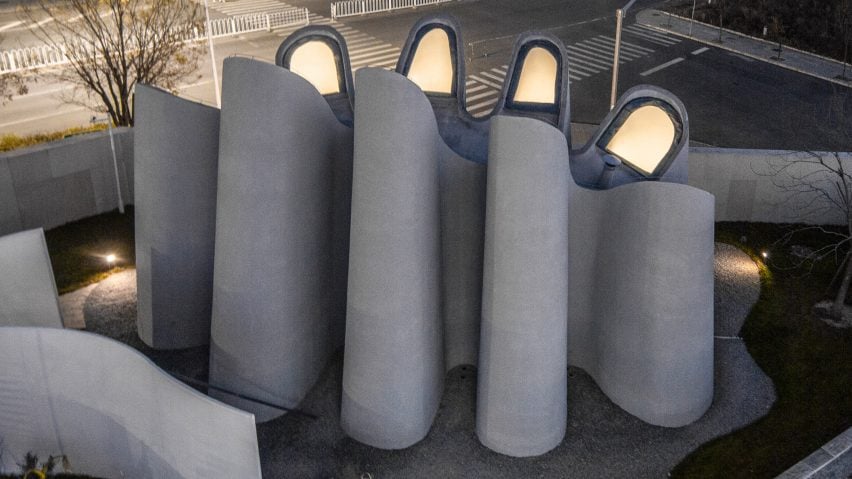Curved micro cement and stucco walls define this amoeba-shaped public restroom in Beijing, China, designed by People's Architecture Office "with inclusivity as a priority."
Called Amoeba Public Restroom, the facility designed by People's Architecture Office has an irregular and organic shape reminiscent of cellular organisms.
"The Amoeba Public Restroom is designed with inclusivity as a priority, whether people are families with kids, have disabilities, or are gender non-conforming," the studio told Dezeen.
"The cohesive space places an emphasis on inclusion rather than segregation," it added.
Located in Manshan Park in the mountainous Mentougou district of Beijing, the new toilet is part of a complex including a gallery, markets, sculptures and performance spaces.
The building is composed of a single sinuous stucco wall that meanders to create individual stalls and sink areas around a central hall.
The wall rises up at the centre of the building, swooping down to form a v-shaped roof with integrated double-glazed skylights.
On entering the public bathroom, the curved walls forming the stalls define the rhythm of the space. LED strip lighting positioned where the walls meet the floor provides a soft glow.
Each stall is a unique shape and size, with stall doors that "float" between the curved walls and do not touch the ground.
Clad in micro cement, the sculptural walls of the bathroom are bathed in diffuse light from the openings positioned above each stall, creating contrast in the amorphous space.
"Conical spaces form light wells that draw natural light into each stall," said the studio. "The resulting spaces bring a sacred beauty to the most profane of activities."
People's Architecture Office is a Beijing studio founded by He Zhe, James Shen and Zang Feng in 2010. The studio was the first architecture practice in Asia to be certified as a B-Corp.
Previous public-facing projects by the studio in China include a blue-toned makeover of a school in Shenzhen, and a modular cultural centre with a prefabricated metal structure in Yantai.
The photography is by Zhu Yumeng unless stated otherwise.

